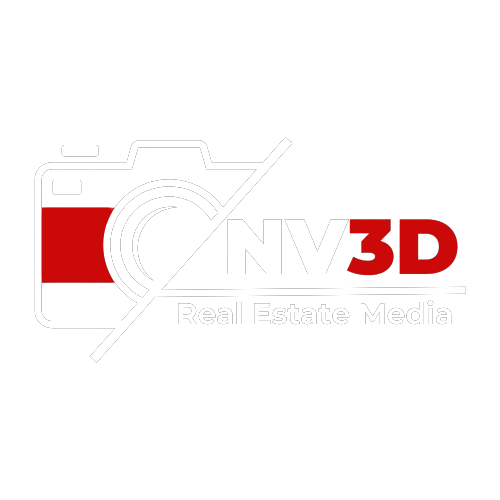
The Ultimate Guide to 3D Real Estate Photography
3D Real Estate Photography
The Ultimate Guide to 3D Real Estate Photography
Outline:
Introduction
What is 3D Real Estate Photography?
The Importance of 3D Photography in Real Estate
Enhancing Buyer Engagement
Increasing Property Visibility
Creating an Immersive Experience
How 3D Photography Works
Equipment Used
The Process of Capturing 3D Images
Rendering and Virtual Staging
Benefits of 3D Real Estate Photography
Higher Buyer Interest
Reduced Time on Market
Increased Conversion Rates
3D Virtual Tours vs. Traditional Photography
The Limitations of Standard Photos
Advantages of 3D Virtual Tours
How to Get Started with 3D Real Estate Photography
Choosing the Right Camera
Hiring a Professional vs. DIY
Software and Tools for 3D Rendering
Tips for Capturing High-Quality 3D Real Estate Photos
Lighting Techniques
Optimal Camera Angles
Enhancing Image Quality in Post-Production
The Cost of 3D Real Estate Photography
Pricing Factors
ROI of Investing in 3D Photography
The Future of 3D Real Estate Photography
AI and Automation in Real Estate Imagery
Augmented Reality (AR) and Virtual Reality (VR)
How Real Estate Agents Can Leverage 3D Photography
Marketing Strategies
Social Media and Website Integration
Case Studies: Success Stories with 3D Real Estate Photography
Common Mistakes to Avoid in 3D Real Estate Photography
Conclusion
FAQs
Introduction
The real estate industry has undergone a massive digital transformation, and 3D real estate photography is leading the way. With buyers expecting more than just static images, 3D technology offers an immersive experience that helps properties stand out in a competitive market.
What is 3D Real Estate Photography?
3D real estate photography captures a property in a way that allows viewers to navigate it virtually. Unlike traditional photos, these 3D images create interactive floor plans and walk-through experiences.
The Importance of 3D Photography in Real Estate
Enhancing Buyer Engagement
Buyers can explore properties from anywhere, leading to greater interest and connection.
Increasing Property Visibility
Listings with 3D tours receive more views and engagement than those with only static images.
Creating an Immersive Experience
A virtual walkthrough makes buyers feel like they are inside the property, leading to faster decision-making.
How 3D Photography Works
Equipment Used
High-resolution cameras, 360-degree lenses, and 3D scanning technology.
The Process of Capturing 3D Images
Multiple images are stitched together to create a realistic model of the property.
Rendering and Virtual Staging
Post-production techniques enhance the realism and appeal of the final product.
Benefits of 3D Real Estate Photography
Attracts more potential buyers
Reduces unnecessary property visits
Increases chances of selling at a higher price
3D Virtual Tours vs. Traditional Photography
The Limitations of Standard Photos
Flat images fail to showcase the depth and flow of a space.
Advantages of 3D Virtual Tours
Buyers get a true feel of the property without physically being there.
How to Get Started with 3D Real Estate Photography
Choosing the Right Camera
Look for high-resolution 3D cameras or professional services.
Hiring a Professional vs. DIY
Professionals provide high-quality results, but DIY options are available with the right tools.
Software and Tools for 3D Rendering
Matterport, Zillow 3D Home, and other advanced tools offer excellent solutions.
Tips for Capturing High-Quality 3D Real Estate Photos
Use natural lighting for a warm and inviting feel
Keep the space decluttered
Use professional editing tools to enhance visuals
The Cost of 3D Real Estate Photography
Pricing Factors
Costs vary depending on property size, location, and photographer expertise.
ROI of Investing in 3D Photography
Increased buyer interest and quicker sales justify the investment.
The Future of 3D Real Estate Photography
AI and Automation in Real Estate Imagery
AI-enhanced imaging will revolutionize property marketing.
Augmented Reality (AR) and Virtual Reality (VR)
AR and VR will further enhance virtual tours for a lifelike experience.
How Real Estate Agents Can Leverage 3D Photography
Marketing Strategies
Use 3D images in online listings, brochures, and virtual tours.
Social Media and Website Integration
Share 3D tours on social media and embed them on your website for maximum reach.
Case Studies: Success Stories with 3D Real Estate Photography
Several realtors have reported faster sales and higher offers thanks to 3D photography.
Common Mistakes to Avoid in 3D Real Estate Photography
Poor lighting conditions
Low-quality equipment
Lack of post-production enhancements
Conclusion
3D real estate photography is changing the game for buyers, sellers, and agents. With immersive tours, higher engagement, and faster sales, investing in 3D technology is a smart move for anyone in the industry.
FAQs
1. How much does 3D real estate photography cost?
Costs vary but typically range between $200-$500 per property, depending on size and location.
2. Can I take 3D real estate photos myself?
Yes, but professional photographers provide the best results with high-end equipment and editing tools.
3. What is the best software for 3D real estate photography?
Matterport, Cupix, and Zillow 3D Home are some of the best options.
4. How long does it take to create a 3D tour?
It usually takes a few hours to shoot and a day or two for post-processing.
5. Is 3D real estate photography worth the investment?
Absolutely! It attracts more buyers, increases engagement, and helps sell properties faster.

